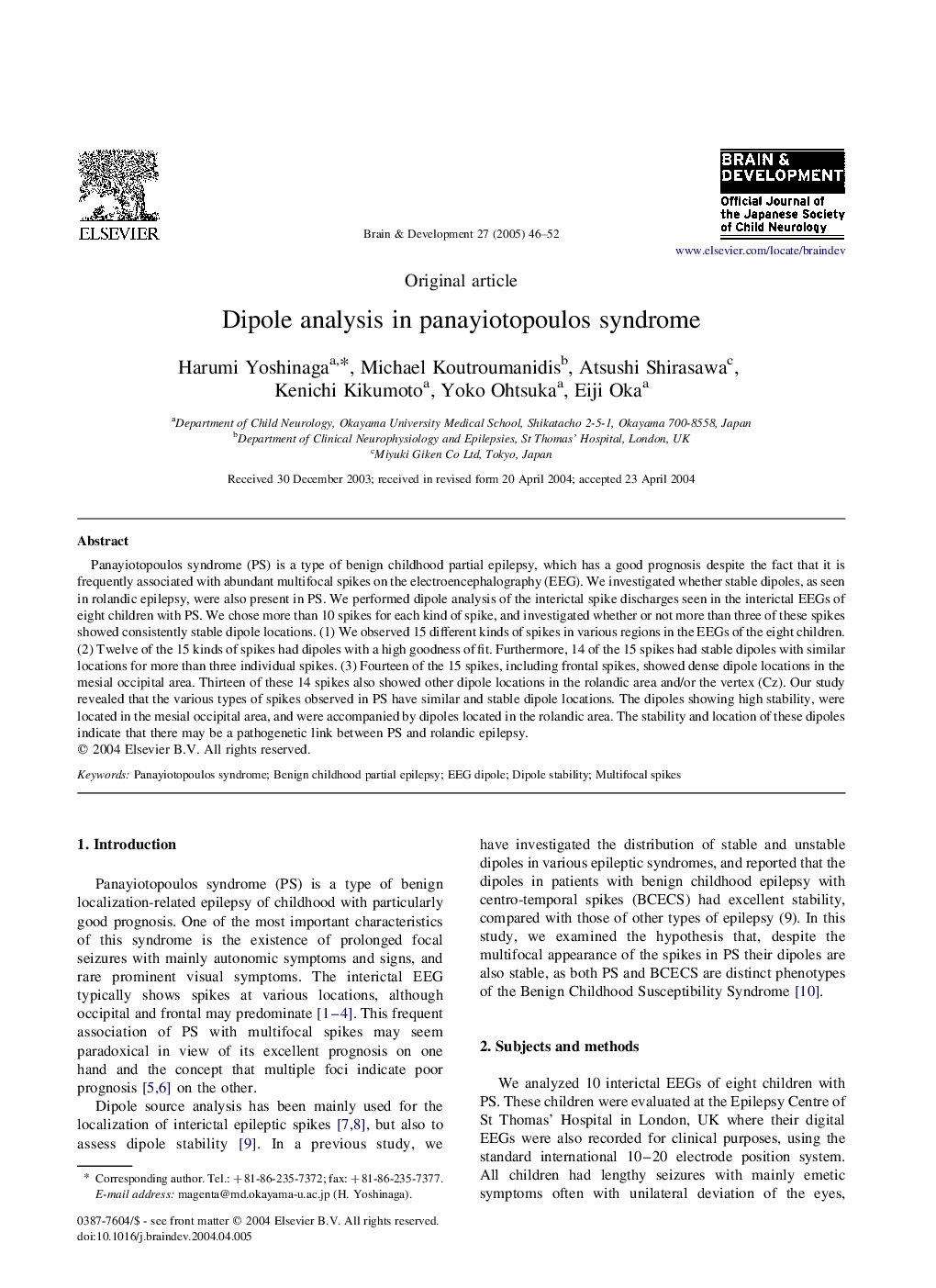| Article ID | Journal | Published Year | Pages | File Type |
|---|---|---|---|---|
| 9187606 | Brain and Development | 2005 | 7 Pages |
Abstract
Panayiotopoulos syndrome (PS) is a type of benign childhood partial epilepsy, which has a good prognosis despite the fact that it is frequently associated with abundant multifocal spikes on the electroencephalography (EEG). We investigated whether stable dipoles, as seen in rolandic epilepsy, were also present in PS. We performed dipole analysis of the interictal spike discharges seen in the interictal EEGs of eight children with PS. We chose more than 10 spikes for each kind of spike, and investigated whether or not more than three of these spikes showed consistently stable dipole locations. (1) We observed 15 different kinds of spikes in various regions in the EEGs of the eight children. (2) Twelve of the 15 kinds of spikes had dipoles with a high goodness of fit. Furthermore, 14 of the 15 spikes had stable dipoles with similar locations for more than three individual spikes. (3) Fourteen of the 15 spikes, including frontal spikes, showed dense dipole locations in the mesial occipital area. Thirteen of these 14 spikes also showed other dipole locations in the rolandic area and/or the vertex (Cz). Our study revealed that the various types of spikes observed in PS have similar and stable dipole locations. The dipoles showing high stability, were located in the mesial occipital area, and were accompanied by dipoles located in the rolandic area. The stability and location of these dipoles indicate that there may be a pathogenetic link between PS and rolandic epilepsy.
Keywords
Related Topics
Life Sciences
Neuroscience
Developmental Neuroscience
Authors
Harumi Yoshinaga, Michael Koutroumanidis, Atsushi Shirasawa, Kenichi Kikumoto, Yoko Ohtsuka, Eiji Oka,
